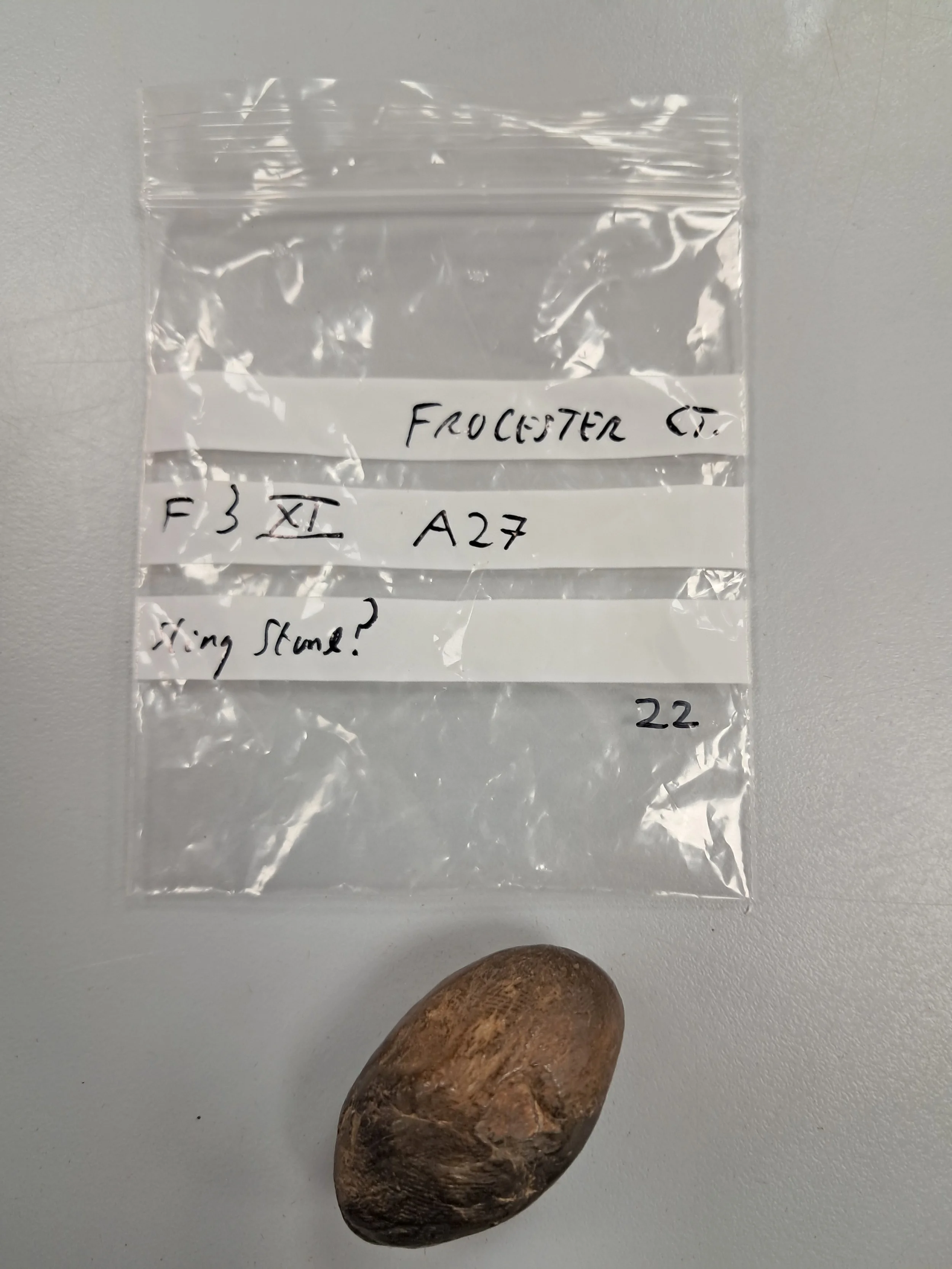Discovery Centre Finds – Sling Bullet
CR1852 From Store to Store
Archive Blog post no. 3
Fired clay ‘sling bullet’
This small, oval-shaped object of fired clay was found in a deposit dated to the 2nd century AD, in the Early Roman period. It looks to have been fired at a high temperature, making it very hard, and it still preserves the fingermarks of the person who made it. Objects like this are fairly common finds from the Late Iron Age and Early Roman periods (1st century BC to 2nd century AD). They are thought to have been used as sling bullets, probably for the hunting of small game, or perhaps by shepherds to ward off predators.
The sling, as mentioned in the Old Testament story of David and Goliath, is a very ancient weapon and sling bullets are known from Britain from the Iron Age onwards. No examples of actual slings are known from this period in Britain as they were probably made from leather or other organic materials that have not survived. However, large caches of ‘slingstones’ are known from Iron Age hillforts, most famously at Maiden Castle in Dorset. The Maiden Castle stones are beach pebbles, much larger and heavier than the fired clay example here, making them much more suitable as weapons of war. Julius Ceasar mentions the use of slings by both the Roman and Gallic forces during the Gallic wars in the 1st century BC. Specialist slingers from the Balearic Islands, who were particularly renowned for their skills with this weapon, were employed as auxiliaries in the Roman army. The sling ammunition used by the Roman army included cast lead ‘bullets’ of biconical shape. These could be particularly deadly, effective at ranges up to 100m and even able to penetrate light armour.

